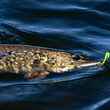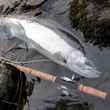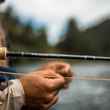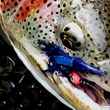For the past few years I've fished Black Friday with a bunch of friends. It was one of those traditions that was easy. No one wanted to be anywhere near a shopping mall so the only real alternative was to be on a river, right? Most years the weather cooperated but the fishing was always a crap shoot. But we were there for something else. At least that's what we told ourselves. This year the trip didn't come together. I'm not sure why other than that maybe the ritual had run it's course.
Around that time, a fellow Trout Unlimited member suggested the chapter get together to fish on New Year's Day. It seemed slightly absurd. First, the morning of the first day of the year is one for nursing a hangover and contemplating the coming season. Second, I doubted anyone would want to join us on the first frigid morning of the coming year. I was assured it was done and that it was something that "we" should do. It might even become a "thing".
Crisp and clear is the best way to describe the dawn of the New Year, though I was still a bit foggy when we got to the water. "We" included myself and two other anglers bundled deep in layers and facing out of the wind. While the water was more than ten degrees warmer than the air, it still froze rapidly once it was stripped up the fly line onto the waiting guides. Five casts was about all you'd get before you started to feel the line vibrate against constricted guides. I long ago gave up on pastes and other additives for keeping guides ice free, they don't seem to buy you all that much time, so at ten casts I either cleared my guides or risked having to fish Tenkara style.






























